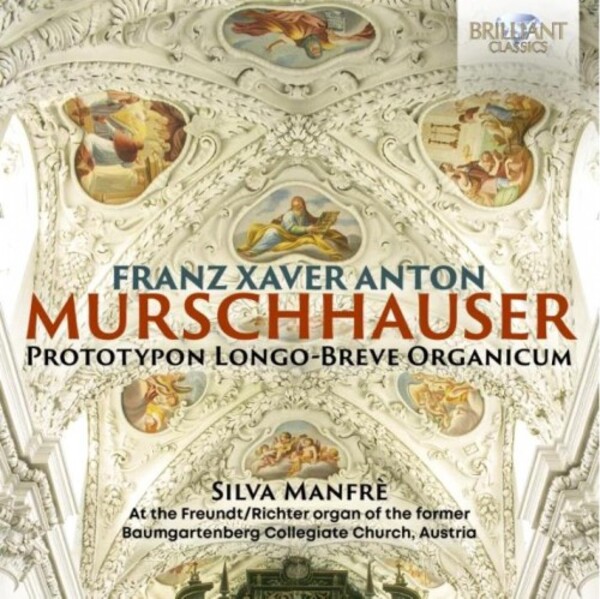
Murschhauser - Prototypon Longo-Breve Organicum
£9.45
In stock - available for despatch within 1 working day
Despatch Information
This despatch estimate is based on information from both our own stock and the UK supplier's stock.
If ordering multiple items, we will aim to send everything together so the longest despatch estimate will apply to the complete order.
If you would rather receive certain items more quickly, please place them on a separate order.
If any unexpected delays occur, we will keep you informed of progress via email and not allow other items on the order to be held up.
If you would prefer to receive everything together regardless of any delay, please let us know via email.
Pre-orders will be despatched as close as possible to the release date.
Label: Brilliant Classics
Cat No: 96707
Format: CD
Number of Discs: 1
Genre: Instrumental
Release Date: 28th April 2023
Contents
Artists
Silva Manfre (organ)About
In July 1690, most probably on the recommendation of his teacher Johann Kaspar Kerll, Murschhauser was asked to stand in for the choirmaster of the Munich Frauenkirche, Ludwig Hölz, who was indisposed owing to illness. After the latter’s death in 1691, Murschhauser became his successor, holding the position for the remainder of his life.
The Prototypon Longo-Breve Organicum (which might be translated as ‘Prototypes for organ pieces, long and short’) was published in two parts in Nuremberg in 1703 and 1707 and contains eight cycles/sections totalling 46 compositions, comprising varying numbers of intonations, praeambulae, fugues, canzonas, toccatas and finales designed as preludes or postludes to figural music. In 20 of the more extensive numbers, Murschhauser indicates cuts as an aid for organists in liturgical use, if needed. It is precisely these sorts of adaptations of the musical material offered by the composer himself to suit the time available in liturgical performance that make the Prototypon such a practical and relevant work, right down to our own times.
The intonations are made up of figures, broken chords and passages over a pedal point, deliberately kept free of any imitative interplay. The praeambulae consist either of motivic figurations with imitative passages and pedal points somewhat reminiscent of the style of Johann Pachelbel, or they are more akin to the old Italian toccata in their alternation of chord successions and scales. By contrast, the two toccate arpeggiate, with their full-voiced chordal writing and harmonic richness, point to the Overture in the French style which, at this time, was finding its way into southern German music primarily through the work of Johann Kaspar Ferdinand Fischer.
In his edition of the Prototypon (housed in Vol.18 of Monuments of Musical Art in Bavaria), Max Seiffert writes: ‘In all these pieces, Murschhauser demonstrates a remarkable creative power and contrapuntal skill’. In this respect, the Prototypon Longo-Breve Organicum by Franz Xaver Anton Murschhauser remains an important record of musical and organ performance in the southern German Early Baroque, and one that can still offer a valuable service to the organists of today.
Silva Manfrè studied organ and organ composition at the Conservatory of Music in Verona (Italy), at the University of Music and Performing Arts of Vienna (Austria) and Musicology at the Universities of Pavia and Vienna. Among her main interests are lesser known or rarely performed compositions of the Renaissance and the Baroque. Her previous recording of organ works by Ottavio Bariolla (96376) was enthusiastically received.
Played on the historic 1662 Freundt/Richter Organ of the Stiftskirche Baumgartenberg, the specifications of which are included in the booklet.
Error on this page? Let us know here
Need more information on this product? Click here